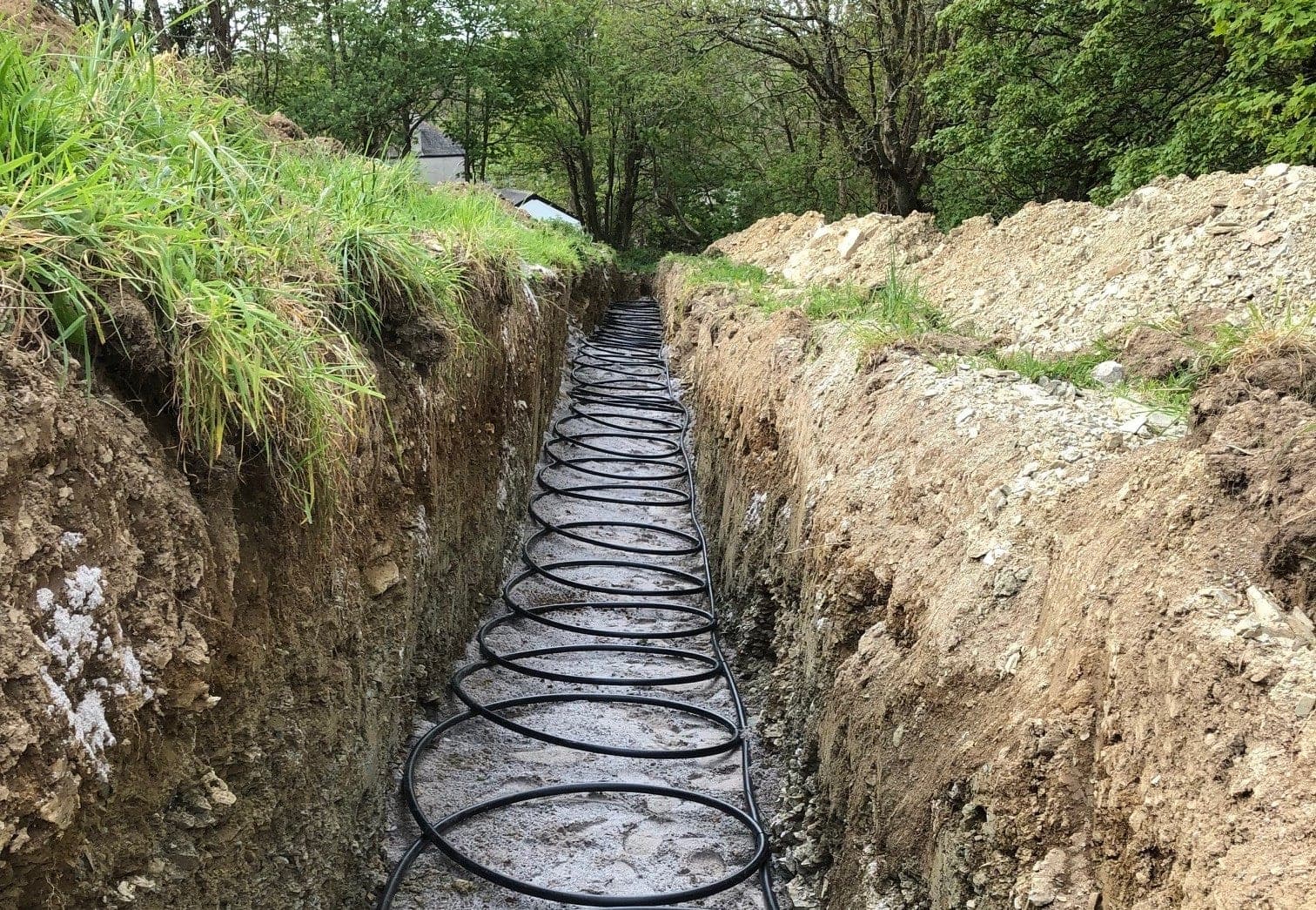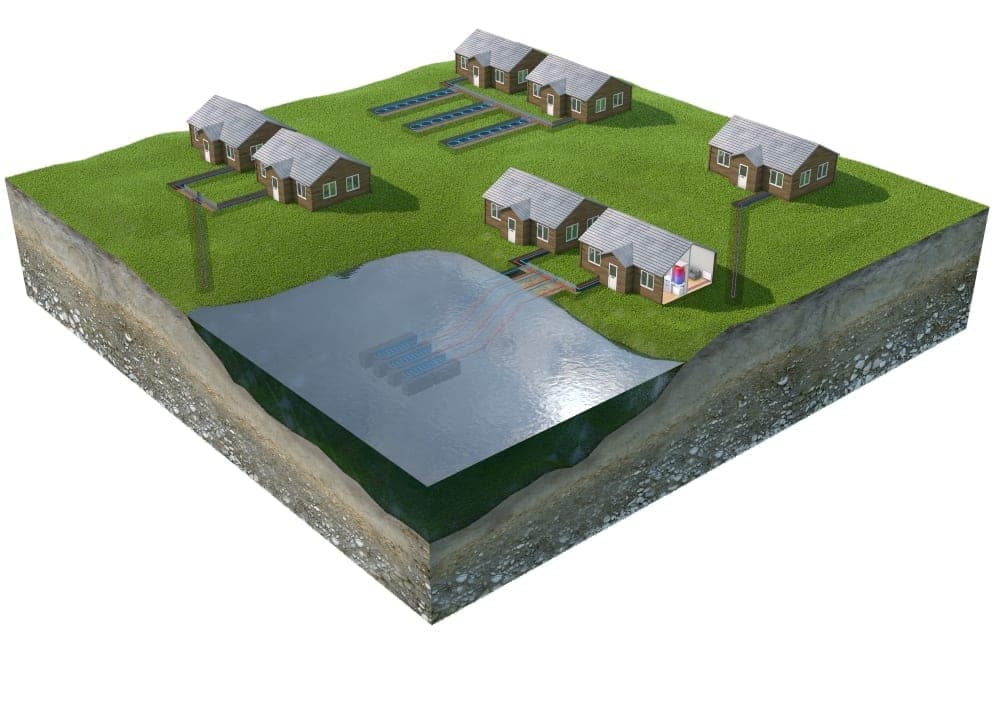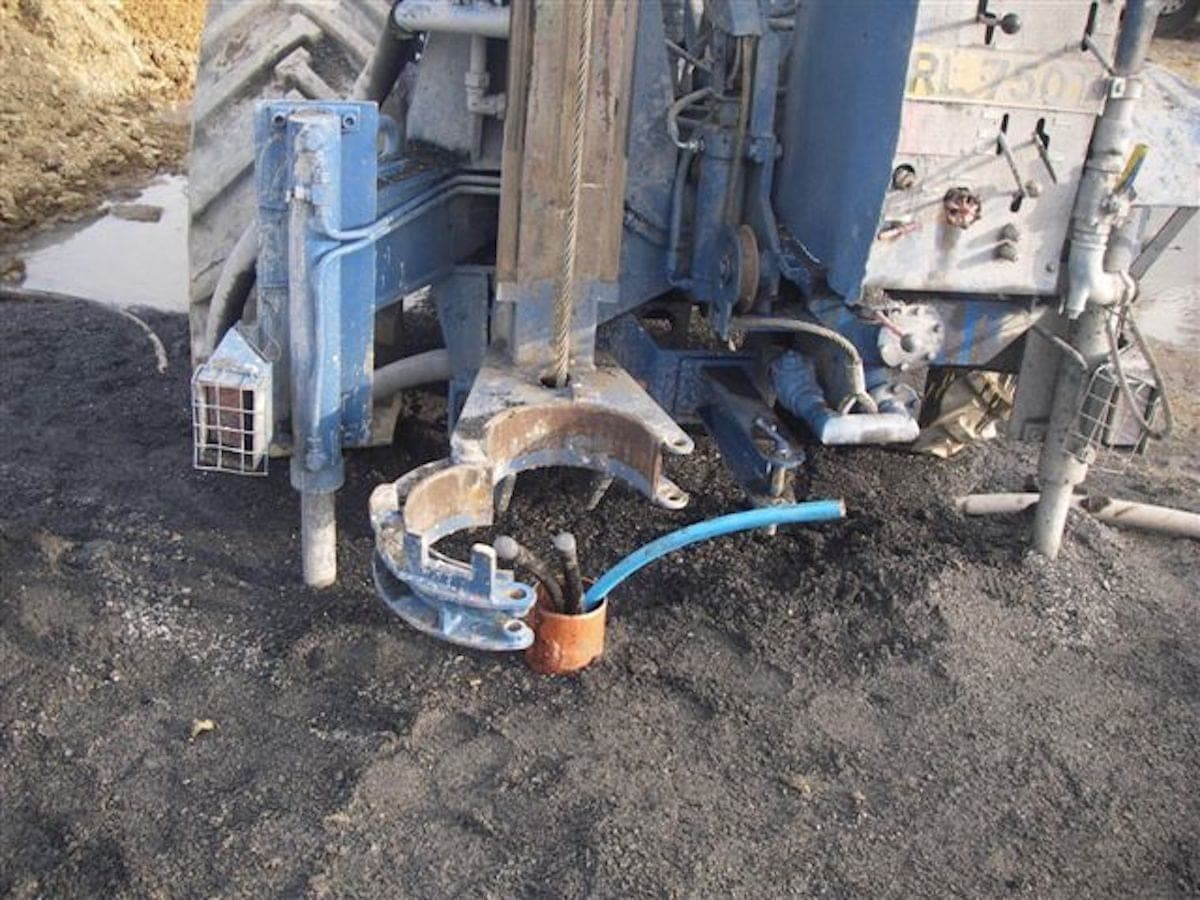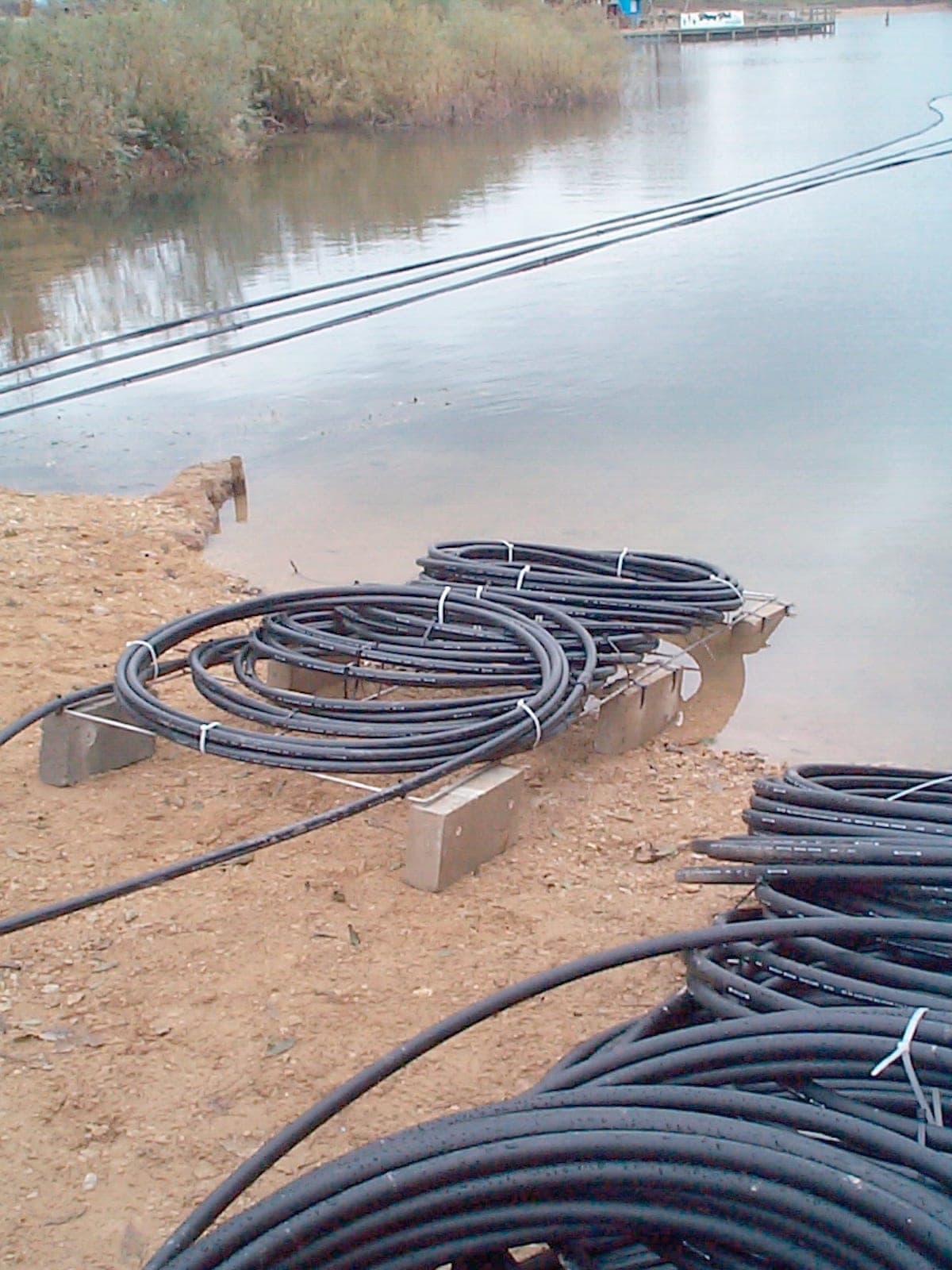
Surface soil
Surface soil is usually an ideal source for properties in rural areas, or any building with a fair amount of surrounding land (40m x 12m). This allows room for long and shallow trenches.
Ground array for soil: Slinky pipes or straight pipe
To extract the heat from surface soil, a network of ground collectors, consisting of a series of pipes, is buried in the ground in trenches to a depth of 1 – 2m. Typically consisting of coiled pipe, collectors of this nature are referred to as ‘slinkies’.


